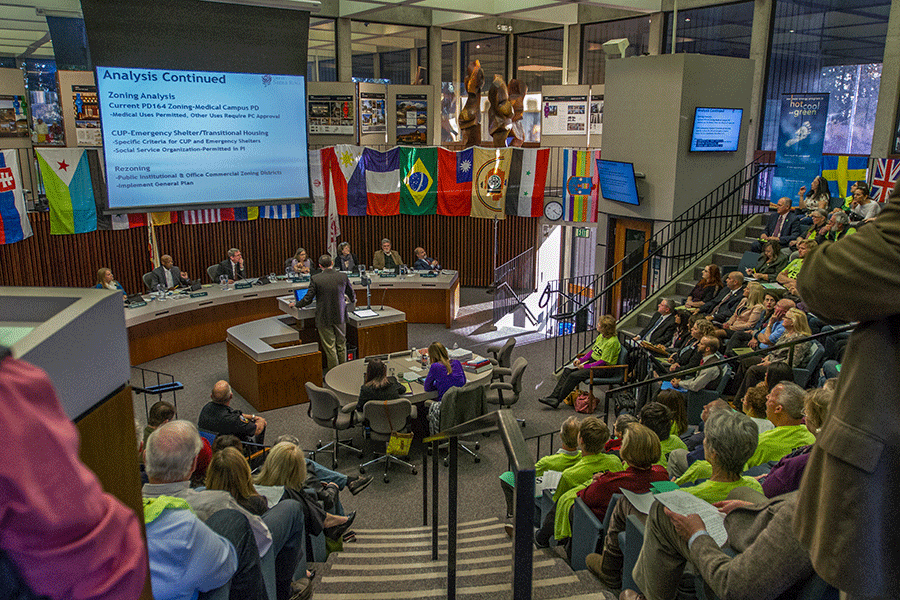The transition from adolescence to adulthood can be a formative time, especally for foster kids who have aged out of the foster care system. Without a proper support system youth often struggle with how to get a job, get through college and survive in the world of bill paying and budget balancing.
The nonprofit Social Advocates for Youth (SAY) hopes to ease that transition with a new “Dream Center” in Santa Rosa. The proposed center would provide housing, job training, education and healthcare support for 63 young people ages 18-24.
More than 500,000 children and youth are in foster care nationally. Twenty thousand age-out or emancipate each year, according to national foster care statistics provided by the U.S. Department of Health and Human Services.
SAY hopes to help foster kids and homeless youth to stay off the streets while transitioning into a stable living environment by repurposing the Warrick Hospital on Summerfield Road as the SAY Dream Center.
“The Dream Center will support the youth of this community who really want to better themselves, become part of our community, get an education and become independent,” said Brian Purtill, SAY board of director member.
“The project is an expansion of SAY’s facilities. There are administrative offices as well that would be part of the center. It is not just a transitional housing center, which is really what has gotten out to the press. It is much more than that,” he said.
SAY compares the Dream Center to its other successful program, Tamayo Village on Yulupa Avenue. Tamayo Village is a 25-bedroom, apartment-style complex that houses teens ages 18-24 and helps young adults find housing, secure employment and continue higher education.
To make residents successful, Tamayo Village requires them to be employed or actively looking for a job. Tenants must also continue their education or be active in community service as detailed in Tamayo’s housing agreement.
Tenants must meet weekly with the on-site case manager to review individual transition plans, which establishes that the tenants are on track to transition into permanent housing.
By implementing these steps, Tamayo Village has found that 80 percent of youth who live at Tamayo Village successfully move to stable housing within 18-24 months.
Members of the Bennett Valley community are still concerned with what type of activity and behavior the Dream Center will attract. Neighbors worry about a potential increase in drug abuse, gang activity, vandalism and other problems.
Critics of the Dream Center, including Community United, a coalition of Bennett Valley residents, and 12 probation officers [PO], are concerned with SAY’s ability to produce staff members trained to maintain the facility and uphold all the programs the Dream Center plans to provide.
Members of the community are not pleased with Tamayo Village as an example of success. According to the Tamayo Village Police Report, there were 62 police calls ranging from battery to sexual assault at Tamayo Village in the past three years.
Caitlin Childs, the communications manager of SAY, addressed these community concerns in a newsletter on Oct. 2 stating that the document is incorrect. “The facts: of the 62 calls placed to the SRPD from Tamayo Village in the past three years, only 10 have resulted in a police report, about three calls per year,” Childs wrote.
To assuage safety concerns, SAY proposes that during the Dream Center’s first year, SAY will provide only 30 beds for transitional housing and 12 beds for the emergency shelter. Over the next three years the number of beds used for transitional housing will increase to 51.
According to the supplemental submission application, the center will undergo additional policies to protect the Dream Center and the community. No smoking or amplified music will be allowed, overnight guests will be limited to a maximum of 12 per night and all guests must be approved by SAY staff in advance.
“The [probation officers’] concern for public safety is something we all share. In effect, by the POs raising issues, and by SAY’s willingness to listen and make adjustments. I believe the proposed Dream Center, if approved, will be better than originally envisioned,” Sonoma County Chief Probation Officer Robert Ochs wrote in a signed letter supporting the Dream Center.
Sonoma County residents lined up outside of City Chambers Jan. 23 to share their thoughts on the Dream Center at a Santa Rosa Planning Commission public hearing.
“I am just here to find out more about it. I have a property in the area and I think that SAY does a great job, and I just want to find out more,” said Lisa Sullivan, a Bennett Valley resident.
For more information about the Dream Center, go to saysc.org or the city of Santa Rosa website.


